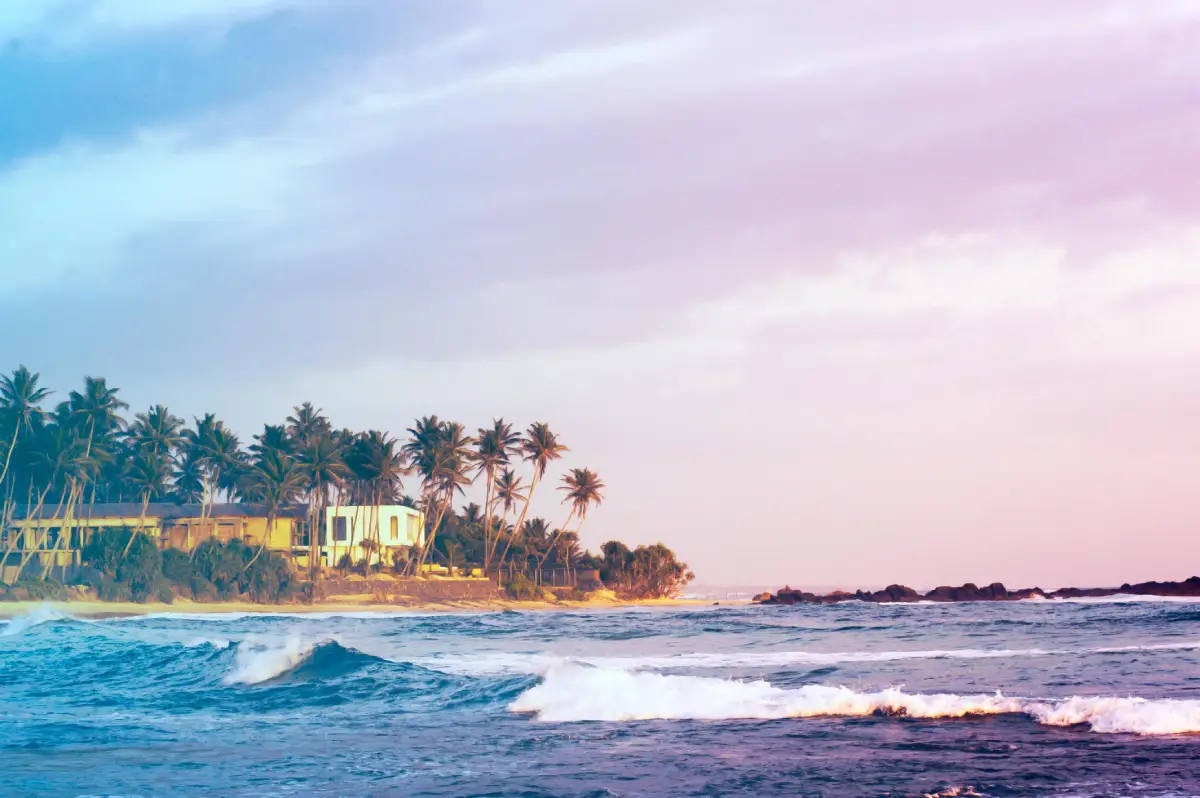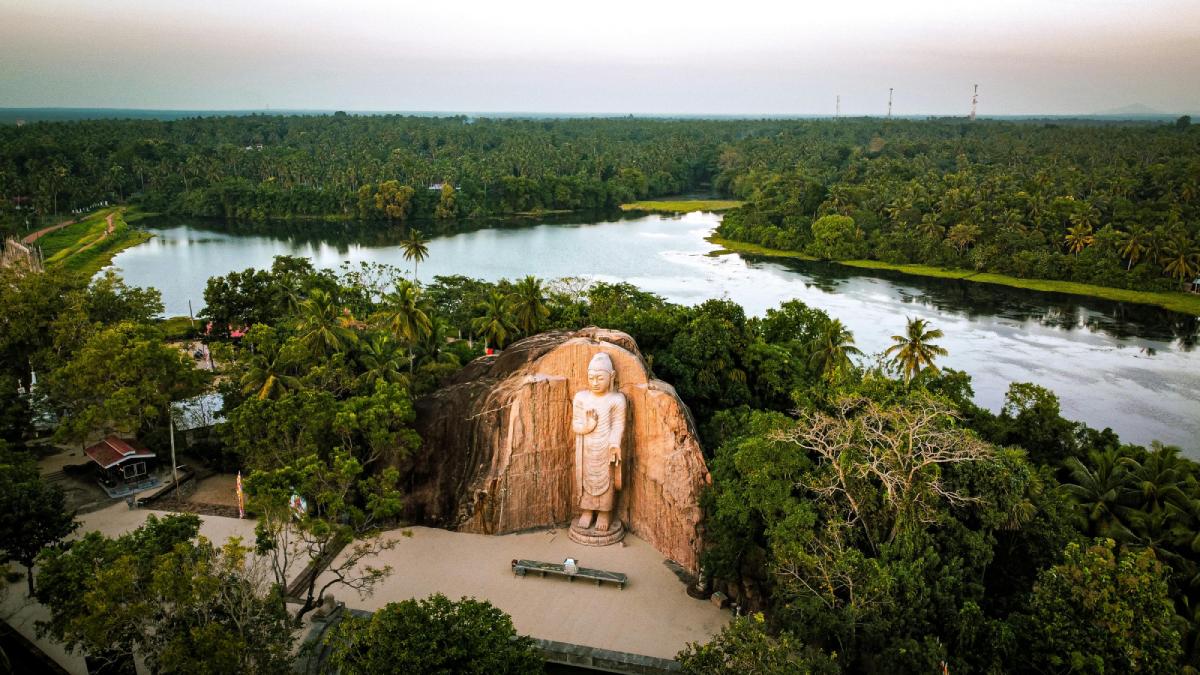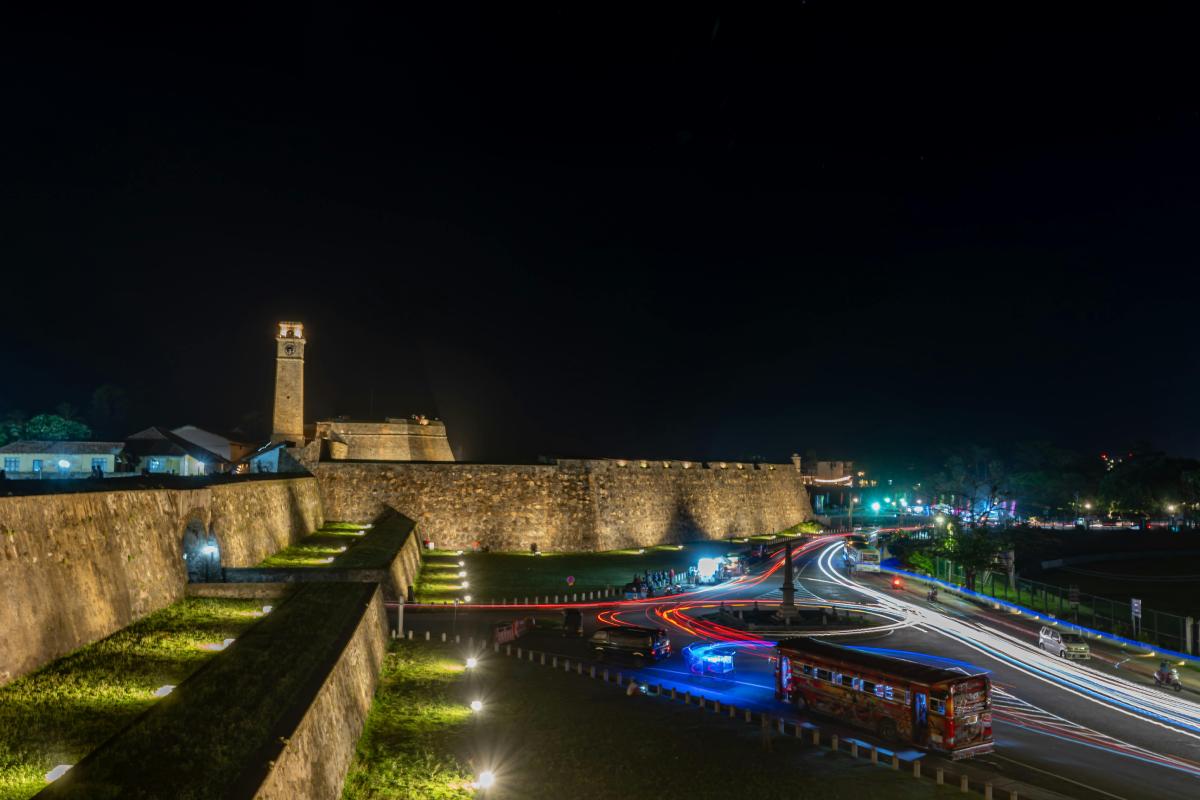Sri Lanka, the pearl of the Indian Ocean, is a captivating island nation that offers an extraordinary blend of ancient history, pristine beaches, lush landscapes, and vibrant culture. Despite its relatively small size, this tropical paradise packs an incredible diversity of experiences that attract millions of visitors from around the world. From ancient kingdoms and sacred temples to stunning coastlines and wildlife-rich national parks, Sri Lanka presents travelers with unforgettable adventures at every turn.
Whether you’re seeking spiritual enlightenment, wildlife encounters, beach relaxation, or cultural immersion, Sri Lanka delivers experiences that will leave lasting memories. The island’s rich heritage spans over 2,500 years, evident in its UNESCO World Heritage Sites, colonial architecture, and traditional customs that continue to thrive today. Let’s explore the top five tourism attractions that make Sri Lanka a must-visit destination for any traveler.
1. Sigiriya Rock Fortress – The Eighth Wonder of the World – Top 5 Tourism Attractions in Sri Lanka
Standing majestically 200 meters above the surrounding plains, Sigiriya Rock Fortress is arguably Sri Lanka’s most iconic attraction and a testament to ancient engineering brilliance. This UNESCO World Heritage Site, often called the “Eighth Wonder of the World,” combines natural beauty with human ingenuity in a way that continues to astound visitors centuries after its construction.
Built in the 5th century AD by King Kashyapa I, Sigiriya served as both a royal palace and fortress. The king chose this massive rock outcrop as his capital after a dramatic family conflict that led to his father’s death. What makes Sigiriya truly remarkable is not just its historical significance, but the sophisticated urban planning, advanced hydraulic systems, and artistic achievements that were implemented at such heights.
The journey to the summit begins with the famous Lion’s Gate, where visitors pass between enormous lion paws carved from rock. Originally, a full lion’s head towered above the entrance, but only the paws remain today. The climb involves navigating steep staircases and narrow walkways, but the effort is richly rewarded with breathtaking panoramic views of the surrounding landscape.
One of Sigiriya’s most celebrated features is the series of ancient frescoes known as the “Sigiriya Maidens.” These remarkable paintings, dating back over 1,500 years, depict beautiful women in vibrant colors that have remarkably survived the test of time. The frescoes are protected in a pocket of rock and represent some of the oldest surviving examples of Sri Lankan art.
The Mirror Wall, another fascinating feature, was originally polished so highly that the king could see his reflection in it. Over the centuries, visitors have inscribed poems and messages on this wall, creating a unique historical record of ancient graffiti that provides insights into the thoughts and feelings of people from bygone eras.
At the summit, visitors can explore the ruins of the royal palace, complete with the remains of the king’s throne, pools, and gardens. The advanced water management system, which includes sophisticated fountains and irrigation channels, demonstrates the remarkable engineering skills of ancient Sri Lankan civilization.
The best time to visit Sigiriya is early morning or late afternoon to avoid the heat and crowds. The climb typically takes 2-3 hours, and visitors should wear comfortable shoes and bring plenty of water. The site is open daily, and combining a visit with nearby attractions like the Dambulla Cave Temple creates a perfect day trip into Sri Lanka’s ancient past.
2. Temple of the Sacred Tooth Relic (Sri Dalada Maligawa) – Kandy’s Spiritual Heart
Located in the hill capital of Kandy, the Temple of the Sacred Tooth Relic stands as one of Buddhism’s most sacred sites and a cornerstone of Sri Lankan spiritual life. This magnificent temple complex houses what is believed to be a tooth of the Buddha, making it an essential pilgrimage destination for Buddhists worldwide and a fascinating cultural experience for all visitors.
The temple’s history dates back to the 16th century when the Portuguese threatened the coastal regions, forcing the Sinhalese kings to move their capital to the more defensible hill country. The tooth relic, which had been carefully preserved and moved between various kingdoms for over a thousand years, found its permanent home in Kandy. According to legend, whoever possesses the tooth relic has the divine right to rule the island, making it not just a religious artifact but a symbol of sovereignty.
The temple complex itself is an architectural masterpiece that reflects the finest traditions of Kandyan craftsmanship. The main shrine room, where the tooth relic is housed, features intricate woodcarvings, elaborate paintings, and ornate decorations that create an atmosphere of profound reverence. The relic is kept in a series of nested golden caskets, each more elaborate than the last, and is only displayed to the public during special ceremonies.
Daily rituals at the temple create a mesmerizing spectacle of devotion. Three times each day, the temple doors open for special ceremonies accompanied by traditional drums and haunting melodies. Devotees and visitors alike can witness these ancient rituals, which include the offering of flowers, incense, and prayers. The evening ceremony, in particular, is a profound experience as the temple fills with the sounds of chanting and the glow of oil lamps.
The temple complex extends beyond the main shrine to include several other significant buildings. The Audience Hall, with its carved wooden pillars, once served as a meeting place for the Kandyan kings. The Royal Palace, now a museum, displays artifacts from the Kandyan period, including royal regalia, weapons, and decorative items that provide insights into the sophisticated court culture of ancient Sri Lanka.
One of the most spectacular events associated with the temple is the annual Esala Perahera, held during the months of July and August. This grand festival features elaborate processions with decorated elephants, traditional dancers, fire performers, and drummers. The sacred casket (though not the actual tooth relic) is carried through the streets of Kandy on the back of a magnificently decorated elephant, creating one of Asia’s most spectacular religious celebrations.
Visitors to the temple should dress modestly, covering shoulders and knees, and remove shoes before entering the sacred areas. The temple is open daily, but the best times to visit are during the evening ceremonies when the spiritual atmosphere is most intense. The surrounding area offers excellent opportunities to explore Kandy’s colonial architecture, spice gardens, and the beautiful Kandy Lake.
3. Yala National Park – Wildlife Paradise
Yala National Park represents the wild heart of Sri Lanka, offering some of the best wildlife viewing opportunities in Asia. This expansive protected area, covering nearly 1,000 square kilometers, showcases the island’s incredible biodiversity and provides visitors with the chance to encounter some of the world’s most magnificent creatures in their natural habitat.
The park is most famous for having one of the highest leopard densities in the world, making it the premier destination for leopard spotting. Sri Lankan leopards are larger and more robust than their Indian counterparts, and Yala’s relatively open terrain provides excellent opportunities for sightings. These magnificent cats are apex predators in the park’s ecosystem, and witnessing one in the wild is an unforgettable experience that draws wildlife enthusiasts from around the globe.
Beyond leopards, Yala is home to an impressive array of wildlife. The park hosts significant populations of elephants, with herds regularly seen near water sources, especially during the dry season. Sloth bears, though more elusive, can be spotted foraging for food, particularly during the early morning and evening hours. Water buffalo, spotted deer, wild boar, and various species of monkeys add to the park’s mammalian diversity.
The park’s bird life is equally spectacular, with over 200 species recorded within its boundaries. Yala serves as an important stopover for migratory birds, and the variety of habitats supports both resident and visiting species. Painted storks, pelicans, peacocks, hornbills, and numerous species of eagles and hawks create a birdwatcher’s paradise. The coastal areas of the park are particularly rich in waterbirds, with flamingos occasionally visiting the lagoons.
Yala’s diverse ecosystems range from dense jungle and grasslands to coastal areas and wetlands. This variety of habitats supports different species and provides visitors with constantly changing scenery during game drives. The park’s coastline along the Indian Ocean adds a unique dimension, with beaches where visitors might spot elephants bathing in the sea or crocodiles basking on the shores.
The best way to experience Yala is through organized safari tours in specially designed vehicles. These tours, typically lasting 3-4 hours, are led by experienced guides who know the park’s animals and their behaviors. Early morning and late afternoon safaris offer the best wildlife viewing opportunities, as animals are most active during these cooler periods. The park is divided into several blocks, with Block 1 being the most popular for first-time visitors.
Accommodation options near Yala range from luxury eco-lodges to budget-friendly guesthouses. Many lodges are strategically located to provide easy access to the park while offering comfortable amenities and excellent dining. Some high-end lodges even offer private game drives and specialized wildlife experiences.
The park experiences two main seasons: the dry season (February to July) when animals congregate around water sources, making wildlife viewing easier, and the wet season (August to January) when the landscape is lush and green but animals are more dispersed. Each season offers different advantages for visitors, with the dry season generally preferred for wildlife photography and the wet season offering beautiful scenery and fewer crowds.
4. Galle Dutch Fort – Colonial Heritage by the Sea
The historic city of Galle, located on Sri Lanka’s southern coast, represents one of the finest examples of European colonial architecture in Asia. The Galle Dutch Fort, a UNESCO World Heritage Site, stands as a remarkably well-preserved fortified city that tells the story of centuries of maritime trade, colonial occupation, and cultural exchange.
Originally built by the Portuguese in the 16th century and later extensively modified by the Dutch in the 17th century, the fort represents a unique blend of European architectural styles adapted to South Asian conditions. The massive stone walls, bastions, and gates that surround the old city have withstood centuries of monsoons, colonial conflicts, and even the devastating 2004 tsunami, testament to the skill of their builders.
Walking through the fort’s narrow cobblestone streets feels like stepping back in time. The area within the walls has been continuously inhabited for over 400 years, creating a living museum where colonial buildings house modern shops, restaurants, and residences. The architecture reflects Dutch, Portuguese, and British influences, with features like thick walls, courtyards, and verandas designed to cope with the tropical climate.
The fort’s ramparts provide spectacular views of the Indian Ocean and serve as a popular promenade for both locals and tourists. The Dutch Reformed Church, built in 1755, stands as one of the fort’s most significant historical buildings. Its interior contains numerous memorials and tombstones that tell the stories of Dutch colonial families who lived and died far from their homeland.
The Maritime Museum, housed in a Dutch warehouse, provides insights into the region’s seafaring history and the fort’s role as a major trading post. Exhibits include artifacts from shipwrecks, maritime equipment, and displays about the spice trade that made Galle so valuable to colonial powers.
Modern Galle Fort has evolved into a vibrant cultural center that successfully balances preservation with contemporary life. Art galleries, boutique hotels, cafes, and restaurants occupy restored colonial buildings, creating a unique atmosphere where history and modernity coexist. The fort has become a hub for Sri Lanka’s growing arts scene, with numerous galleries showcasing local and international artists.
The surrounding area offers additional attractions that complement a visit to the fort. Galle’s beaches provide opportunities for swimming, surfing, and relaxation, while the nearby Koggala Lake offers boat trips and bird watching. The traditional stilt fishermen of the southern coast can often be seen near Galle, practicing a fishing method that has been passed down through generations.
The fort is particularly magical during sunset, when the golden light illuminates the old buildings and the ocean beyond. The lighthouse, built by the British in 1938, serves as a prominent landmark and offers excellent views of the fort and coastline. Evening walks along the ramparts provide romantic settings and opportunities for photography.
Shopping within the fort reveals a treasure trove of local crafts, gems, textiles, and antiques. Many shops occupy buildings that have been continuously used for commercial purposes for centuries, adding historical significance to the shopping experience. The fort’s restaurants serve both local and international cuisine, with many establishments offering dining experiences in beautifully restored colonial buildings.
5. Ella Rock and Nine Arch Bridge – Hill Country Adventures
The charming hill station of Ella represents the very best of Sri Lanka’s mountainous interior, offering stunning landscapes, pleasant climate, and some of the country’s most photographed attractions. This small town, situated at an elevation of over 1,000 meters above sea level, has become a favorite destination for travelers seeking natural beauty, adventure activities, and a respite from the coastal heat.
Ella Rock stands as the area’s most popular hiking destination, offering one of the most rewarding trekking experiences in Sri Lanka. The hike to the summit, which takes approximately 2-3 hours depending on fitness level, passes through tea plantations, forest areas, and local villages, providing insights into rural Sri Lankan life along the way. The trail is well-marked but can be challenging, requiring moderate fitness and proper footwear.
The summit of Ella Rock provides panoramic views that are simply breathtaking. On clear days, visitors can see across the hill country to the distant coast, with layers of mountains creating a dramatic backdrop. The viewing area at the top offers 360-degree views, making it an ideal spot for photography and quiet contemplation. Sunrise and sunset from Ella Rock are particularly spectacular, though early morning climbs require starting in darkness.
The famous Nine Arch Bridge, also known as the Bridge in the Sky, represents one of Sri Lanka’s most iconic railway engineering achievements. This magnificent stone bridge, built during the British colonial period, spans a deep valley surrounded by lush forest and tea plantations. The bridge’s nine arches create a perfect symmetry that has made it one of the most photographed locations in Sri Lanka.
What makes the Nine Arch Bridge particularly special is that it was built entirely of stone, brick, and cement without any steel, a remarkable feat of engineering for its time. The bridge continues to serve as an active railway line, with several trains crossing daily. The sight of a train crossing the bridge, with steam billowing and the whistle echoing through the valley, creates a magical scene that delights visitors.
The area around the bridge offers excellent viewpoints for photography and relaxation. Local guides often help visitors find the best spots for photos and provide information about train schedules. The walk to the bridge from Ella town takes about 30 minutes through scenic countryside, making it accessible to most visitors.
Ella’s tea plantations provide another major attraction, offering opportunities to learn about Ceylon tea production and enjoy fresh tea in spectacular settings. Several plantations offer guided tours that explain the tea-making process from leaf to cup. The rolling hills covered in neat rows of tea bushes create some of Sri Lanka’s most beautiful landscapes.
Little Adam’s Peak, another popular hiking destination near Ella, offers a less challenging alternative to Ella Rock while still providing excellent views. The hike takes about 1-2 hours and passes through tea plantations with stunning vistas of the surrounding mountains. The peak gets its name from its resemblance to the more famous Adam’s Peak, though it’s much easier to climb.
The town of Ella itself maintains a laid-back atmosphere that appeals to backpackers and luxury travelers alike. Accommodation options range from budget hostels to boutique hotels, many offering spectacular views of the surrounding mountains. The town’s restaurants serve both local and international cuisine, with many establishments taking advantage of the cool climate to offer outdoor dining.
Adventure activities in and around Ella include zip-lining, mountain biking, and wildlife spotting. The cooler climate makes these activities more comfortable than in the lowlands, and the mountainous terrain provides exciting challenges for adventure seekers.
Conclusion
Sri Lanka’s top tourism attractions offer an incredible diversity of experiences that showcase the island’s rich heritage, natural beauty, and cultural depth. From the ancient wonders of Sigiriya and the spiritual significance of Kandy’s Temple of the Sacred Tooth Relic to the wildlife adventures of Yala National Park, the colonial charm of Galle Fort, and the natural beauty of Ella, each destination provides unique insights into what makes Sri Lanka such a compelling travel destination.
These attractions represent just a fraction of what Sri Lanka has to offer, but they provide an excellent foundation for any visit to this remarkable island nation. Whether you’re interested in history, wildlife, culture, or natural beauty, Sri Lanka delivers experiences that will create lasting memories and inspire return visits.
The key to enjoying Sri Lanka’s attractions is to allow sufficient time for each destination and to remain open to the unexpected encounters and discoveries that make travel so rewarding. With proper planning and an adventurous spirit, visitors to Sri Lanka will find themselves immersed in one of the world’s most captivating travel destinations, where ancient civilizations, diverse wildlife, and warm hospitality combine to create truly unforgettable experiences.


